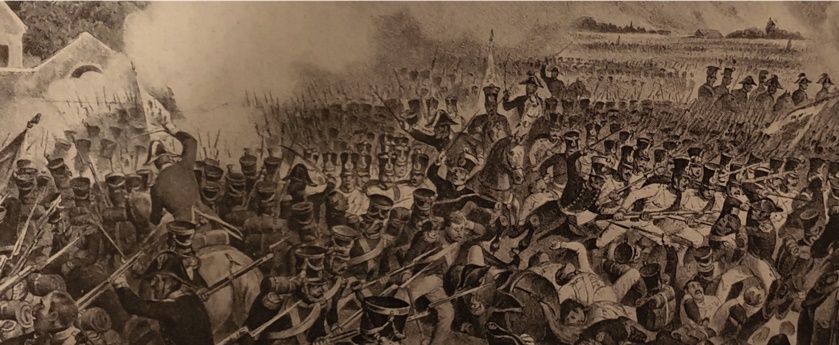Mobilising for Modernity?
The Habsburg Monarchy and its Soldiers: A socio-statistical history from below, 1740-1820
This project offers a comprehensive study of one of the most fascinating, diverse and unjustly disregarded institutions in European history – the army of Habsburg Monarchy from the ascent of Empress Maria Theresa to the immediate aftermath of the Napoleonic Wars. My sources are the largely untapped manpower records (Musterlisten) of the Habsburg regiments. The organisation, consistency and wealth of information within these documents enables wide-ranging comparisons across the entire military forces of the Monarchy. Origin of officers and men, recruitment figures, breakdown between volunteers and conscripts, proportion of foreigners and Habsburg subjects, desertion rates, army strength, peacetime wastage and wartimes casualties are among the data which can be obtained from these records. At the same time, the highly-detailed entries for individual soldiers offer a unique glimpse into the experiences and fortunes of people whose stories are largely lost in grand narratives of war and modernisation.

At the heart of my project lies a large statistical database of hundreds of Musterlisten which are used to calculate army-wide figures. In parallel, I am compiling a focused sample of several thousand individual officers, non-commissioned officers and private soldiers whose service itineraries are recreated in as much detail as possible. This combination of quantitative and qualitative methods takes account of the composite nature of the Habsburg Monarchy and the way it was reflected in the management of its military forces. On the one hand, the army was one of the few truly Imperial institutions, centrally managed from Vienna according to the standards set by the notorious Aulic War Council (Hofkriegsrat). On the other hand, in spite of persistent centralisation efforts, Habsburg troops retained substantial regional variety. The Austro-Bohemian Crown lands were subject to very different recruitment practices than the Kingdom of Hungry. There were separate Netherlandish and Italian military establishments whose regiments, while officially running along ‘German’ lines, had their own local peculiarities. Drawing the disparate experience of Habsburg military units into a single analytical empirically-based framework allows us not only to reveal the nature of the Habsburg political and military power, but also to assess the actual results of the different administrative policies which the Monarchy implemented during these years.
Some of the arguments of the forthcoming book may already be found in the recently published chapter on the Austrian Army which I co-wrote with Michael Wenzel for The Cambridge History of the Napoleonic Wars. Building on a comprehensive conscription system established before the French Wars, the Habsburg Monarchy could raise armies almost as large as those available to Revolutionary and Napoleonic France. But fielding a large force was not enough to win. Among the more prominent factors undermining Austria’s military capacity was the collective ethos of her officers, whose meagre pay, low social standing and limited promotion opportunities bred indifference to military professionalism. While reform efforts by the talented Archduke Charles substantially improved the fighting effectiveness of the Habsburg troops, the Archduke never enjoyed the full trust of the Emperor. Against Charles’ advice, in 1805 the army was pushed unprepared into war, resulting in a crushing defeat. In spite of far better military performance in 1809, the Monarchy’s attempt to take on the Napoleonic Empire single-handedly led to another costly failure. Forced to scale down its army in the Peace of Schönbrunn, Austria covertly retained much of its veteran manpower. In 1812, while nominally a French ally, further arrangements were set for a rapid expansion and training of her forces. When the Habsburgs rejoined the war against Napoleon, the size and quality of the Austrian contingent tipped the balance in favour of the Allied Coalition, ensuring Napoleon’s final defeat.
The statistical datasets created during this research are regularly uploaded on the open repository Zenodo. Everyone is welcome to consult these open-access research aids for their own scholarly interests. The Project Community Webpage also hosts miscellaneous publications and essays stemming from my work on the Habsburg Monarchy and its army. For my research on Jewish history in the Napoleonic period, see my project Forgotten Soldiers.
